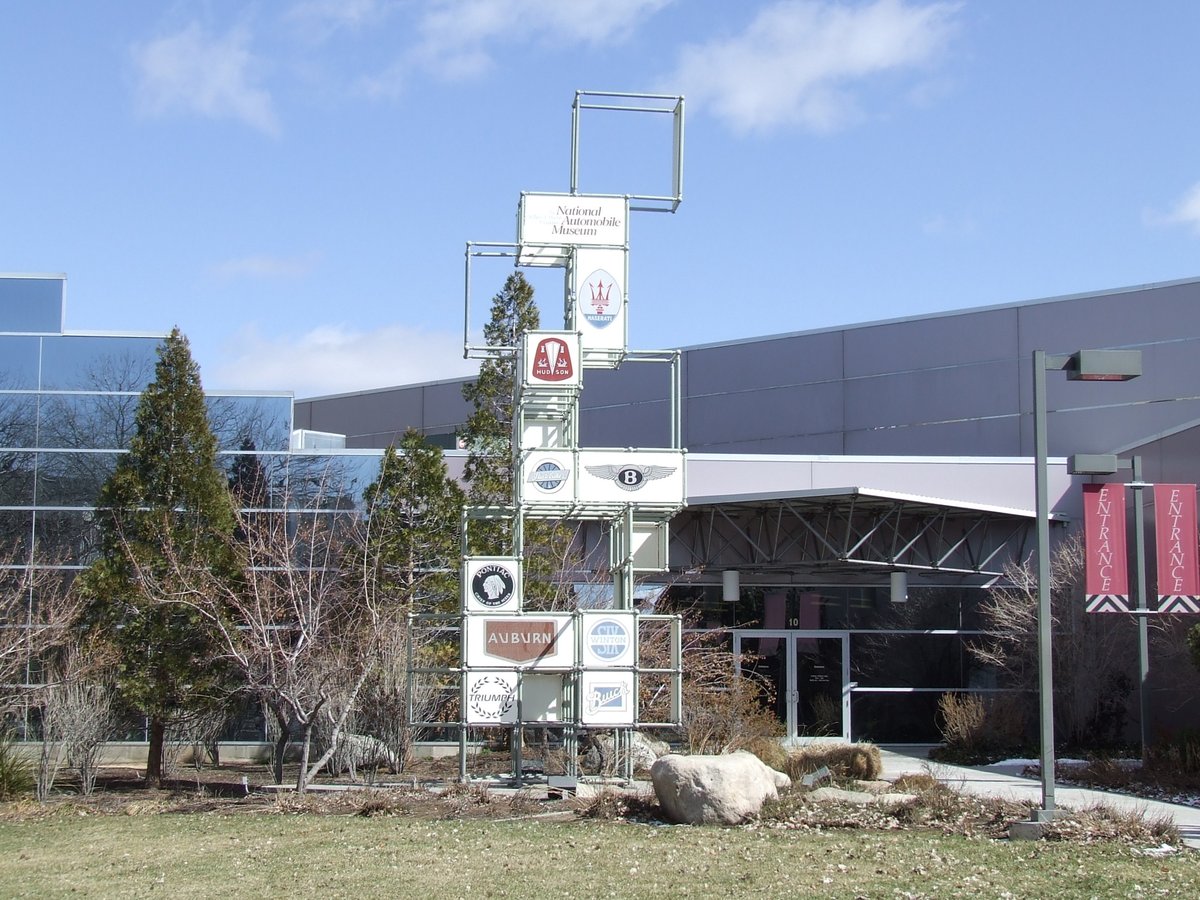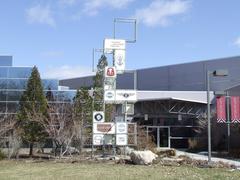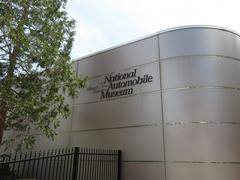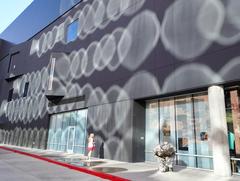
Visiting the National Automobile Museum: Hours, Tickets, and Tips
Published Date: 19/07/2024
Introduction to the National Automobile Museum
The National Automobile Museum in Reno, Nevada, stands as a beacon of automotive history and culture in the United States. This illustrious museum houses one of the most extensive and diverse collections of vehicles, showcasing the rich evolution of the automobile from its inception to the present day. The origins of the museum trace back to the remarkable collection amassed by casino magnate William F. Harrah, who began collecting automobiles in the 1940s. By the time of Harrah’s death in 1978, his collection had grown to over 1,400 vehicles, including rare and historically significant automobiles. The museum, established by the William F. Harrah Foundation in response to an outcry from car enthusiasts and historians, opened its doors in 1989 (National Automobile Museum) (Smithsonian Magazine) (Hemmings).
Visitors to the museum are greeted with a meticulously designed space spanning over 100,000 square feet, divided into four thematic galleries representing different eras in automotive history. These galleries not only display iconic vehicles but also provide contextual insights into their cultural and technological significance. The museum’s commitment to education is evident through its various programs and community events, making it a hub for learning and engagement. Moreover, the museum’s dedication to preservation ensures that these automotive treasures are maintained for future generations to appreciate. Whether you are a car enthusiast, a history buff, or simply looking for an engaging experience, the National Automobile Museum offers a unique and immersive journey through the annals of automotive history.
Table of Contents
- Introduction
- Origins and Establishment
- Architectural Design and Layout
- Cultural and Historical Significance
- Educational and Community Impact
- Preservation and Conservation Efforts
- Visitor Information
- FAQ
- Conclusion
Origins and Establishment
The National Automobile Museum owes its existence to the extensive collection of vehicles amassed by casino magnate William F. Harrah. Harrah, an avid car enthusiast, began collecting automobiles in the 1940s. By the time of his death in 1978, his collection had grown to over 1,400 vehicles, making it one of the largest and most diverse collections in the world. The collection included rare, vintage, and historically significant automobiles, ranging from the earliest horseless carriages to modern-day classics.
Following Harrah’s death, there was considerable concern about the future of his collection. In 1981, Holiday Inn, which had acquired Harrah’s properties, announced plans to sell off the collection. This decision sparked an outcry from car enthusiasts and historians who recognized the cultural and historical value of the collection. In response, a group of concerned citizens and car enthusiasts formed the non-profit organization, the William F. Harrah Foundation, to preserve the collection. Their efforts culminated in the establishment of the National Automobile Museum, which opened its doors to the public in 1989 (National Automobile Museum).
Architectural Design and Layout
The museum’s design and layout were meticulously planned to provide an immersive experience for visitors. The building itself is a modern structure with over 100,000 square feet of exhibit space. The museum is divided into four main galleries, each representing a different era in automotive history. These galleries are:
-
1900s-1910s Gallery - This gallery showcases the earliest automobiles, including horseless carriages and early electric vehicles. Notable exhibits include a 1907 Thomas Flyer, which won the 1908 New York to Paris Race, and a 1912 Rambler Cross Country.
-
1920s-1930s Gallery - This gallery highlights the golden age of the automobile, featuring luxurious and stylish vehicles from the Roaring Twenties and the Great Depression. Key exhibits include a 1936 Cord 810, known for its innovative design, and a 1928 Cadillac Town Sedan.
-
1940s-1950s Gallery - This gallery focuses on the post-World War II era, showcasing the rise of the American automobile industry and the advent of muscle cars. Notable exhibits include a 1953 Chevrolet Corvette, the first year of production for this iconic sports car, and a 1948 Tucker 48, one of only 51 ever made.
-
1960s and Beyond Gallery - This gallery features modern classics and contemporary vehicles, highlighting the evolution of automotive technology and design. Key exhibits include a 1965 Shelby Cobra, a symbol of American muscle, and a 1992 Dodge Viper, representing the resurgence of high-performance sports cars in the 1990s.
Cultural and Historical Significance
The National Automobile Museum is not just a repository of cars; it is a testament to the cultural and technological evolution of the automobile. Each vehicle in the collection tells a story, reflecting the social, economic, and technological changes of its time. The museum’s exhibits are carefully curated to provide context and insight into the significance of each vehicle.
For example, the 1907 Thomas Flyer, which won the 1908 New York to Paris Race, is a symbol of early automotive endurance and innovation. The race itself was a grueling test of man and machine, covering over 22,000 miles across three continents. The Thomas Flyer’s victory demonstrated the potential of the automobile as a reliable means of long-distance transportation (Smithsonian Magazine).
Similarly, the 1948 Tucker 48 represents the spirit of innovation and entrepreneurship in the post-war era. Designed by Preston Tucker, the Tucker 48 featured numerous safety innovations, including a padded dashboard, a pop-out windshield, and a rear-mounted engine. Despite its advanced design, the Tucker 48 faced numerous challenges, including legal battles and financial difficulties, which ultimately led to the company’s demise. Today, the Tucker 48 is a symbol of what could have been, a reminder of the challenges faced by innovators in the automotive industry (Hemmings).
Educational and Community Impact
The National Automobile Museum plays a vital role in education and community engagement. The museum offers a variety of educational programs and resources for visitors of all ages. These programs include guided tours, hands-on workshops, and interactive exhibits designed to teach visitors about the history and technology of automobiles.
One of the museum’s most popular educational programs is the “Adventures in History” series, which offers themed tours and activities focused on different aspects of automotive history. These programs are designed to engage students and families, providing a fun and educational experience that brings history to life.
In addition to its educational programs, the museum also hosts a variety of community events and activities. These events include car shows, lectures, and special exhibitions, which provide opportunities for car enthusiasts and the general public to come together and celebrate their shared passion for automobiles. The museum’s annual “Hot August Nights” event, for example, is a week-long celebration of classic cars and rock ‘n’ roll, attracting thousands of visitors from around the world (Hot August Nights).
Preservation and Conservation Efforts
Preserving and conserving the vehicles in the collection is a top priority for the National Automobile Museum. The museum employs a team of skilled technicians and conservators who work tirelessly to maintain and restore the vehicles to their original condition. This work involves meticulous attention to detail, using period-correct materials and techniques to ensure the authenticity of each restoration.
The museum’s conservation efforts extend beyond the vehicles themselves. The museum also preserves and archives a vast collection of automotive literature, photographs, and memorabilia. These materials provide valuable context and insight into the history of the automobiles in the collection, as well as the broader history of the automotive industry.
In recent years, the museum has also embraced digital technology to enhance its preservation efforts. The museum has digitized a significant portion of its collection, making it accessible to researchers and enthusiasts around the world. This digital archive includes high-resolution images, detailed descriptions, and historical documentation for each vehicle, providing a valuable resource for anyone interested in automotive history (National Automobile Museum Digital Archive).
Visitor Information
Visiting Hours
The National Automobile Museum is open Monday through Saturday from 9:30 AM to 5:30 PM and on Sundays from 10:00 AM to 4:00 PM. It is closed on Thanksgiving and Christmas.
Ticket Prices
General admission tickets are $12 for adults, $10 for seniors (62+), and $6 for children (6-18). Children under 6 get in for free. Discounts are available for groups and military personnel.
Travel Tips
The museum is located at 10 South Lake Street, Reno, NV 89501. Parking is available on-site, and the museum is wheelchair accessible. Nearby attractions include the Truckee Riverwalk, the Nevada Museum of Art, and various casinos and dining options.
FAQ
What are the visiting hours for the National Automobile Museum?
The museum is open Monday through Saturday from 9:30 AM to 5:30 PM and on Sundays from 10:00 AM to 4:00 PM.
How much are tickets to the National Automobile Museum?
General admission tickets are $12 for adults, $10 for seniors (62+), and $6 for children (6-18). Children under 6 get in for free.
Is the National Automobile Museum wheelchair accessible?
Yes, the museum is wheelchair accessible.
Conclusion
The National Automobile Museum in Reno, Nevada, is a must-visit destination for car enthusiasts and history buffs alike. From its origins in the collection of William F. Harrah to its current status as a world-renowned museum, it offers a unique and immersive experience for visitors. Through its carefully curated exhibits, educational programs, and preservation efforts, the museum continues to celebrate and preserve the rich history of the automobile. Don’t miss the chance to explore this fascinating museum. For more information, visit the National Automobile Museum, check out related posts, and follow us on social media for updates.
References and Sources
- National Automobile Museum. (2023). National Automobile Museum
- The Smithsonian Institution. (2023). Smithsonian Magazine
- American City Business Journals, Inc. (2023). Hemmings
- Regional Transportation Commission of Washoe County. (2023). RTC
- Hot August Nights. (2023). Hot August Nights


